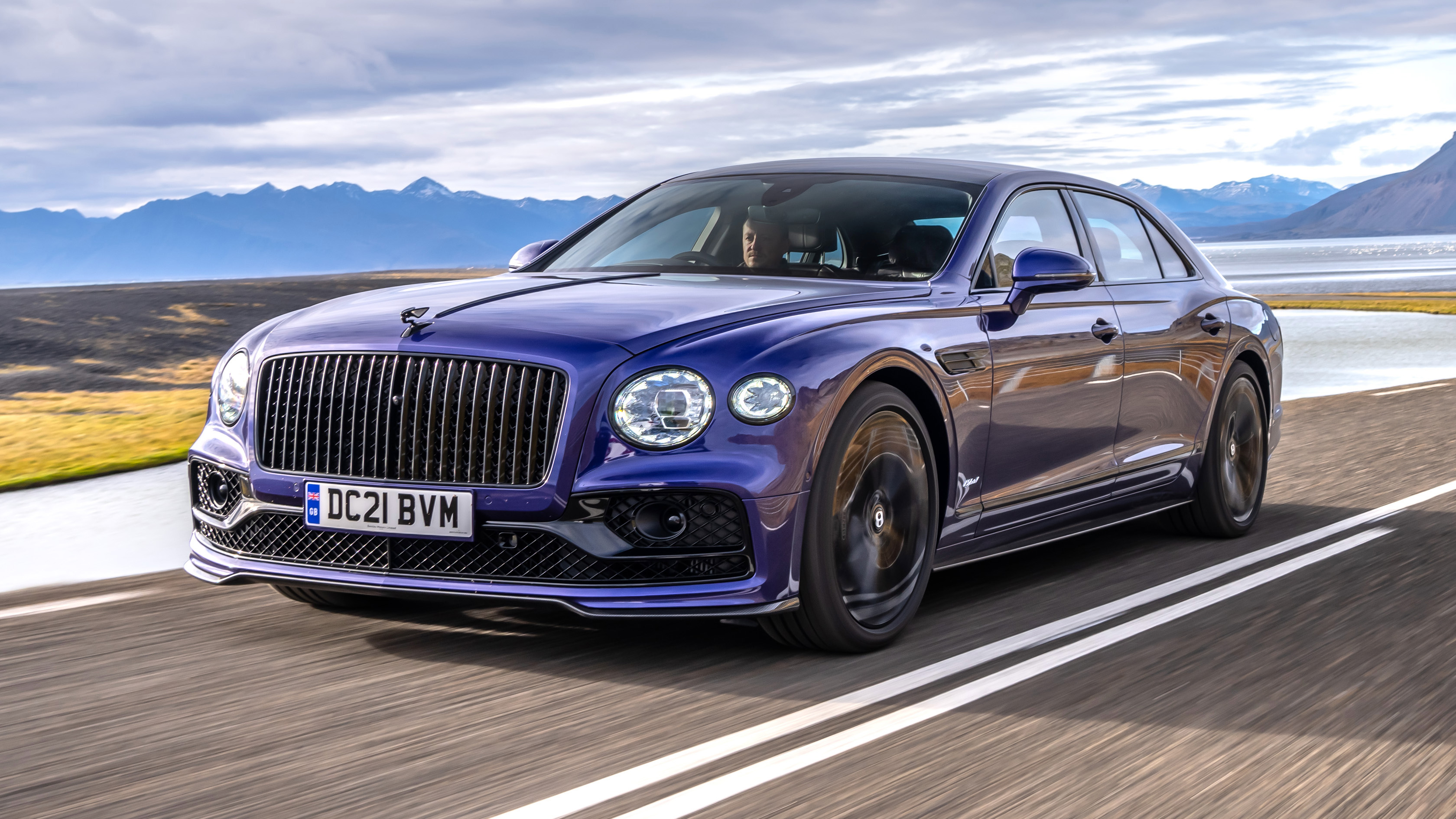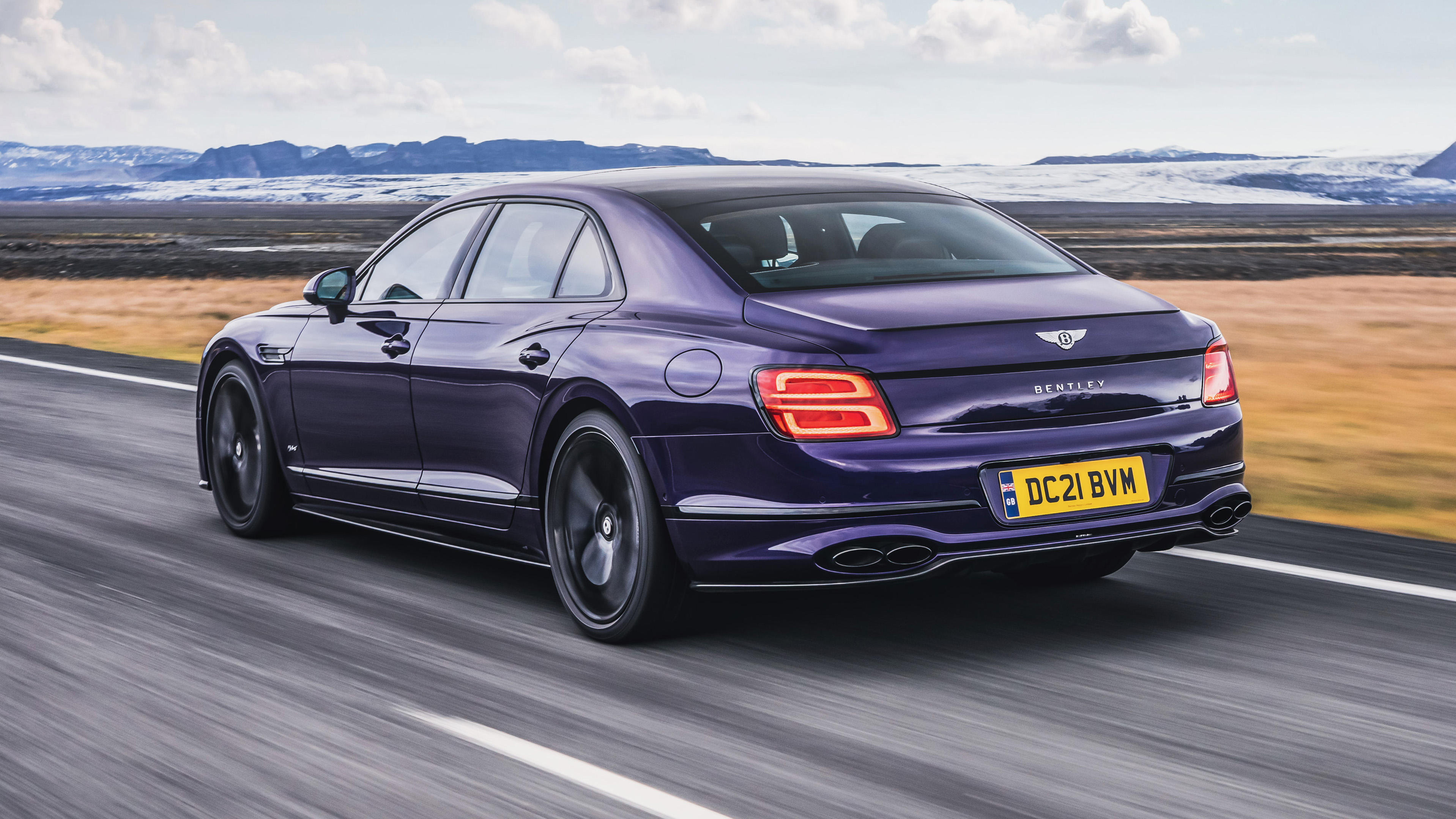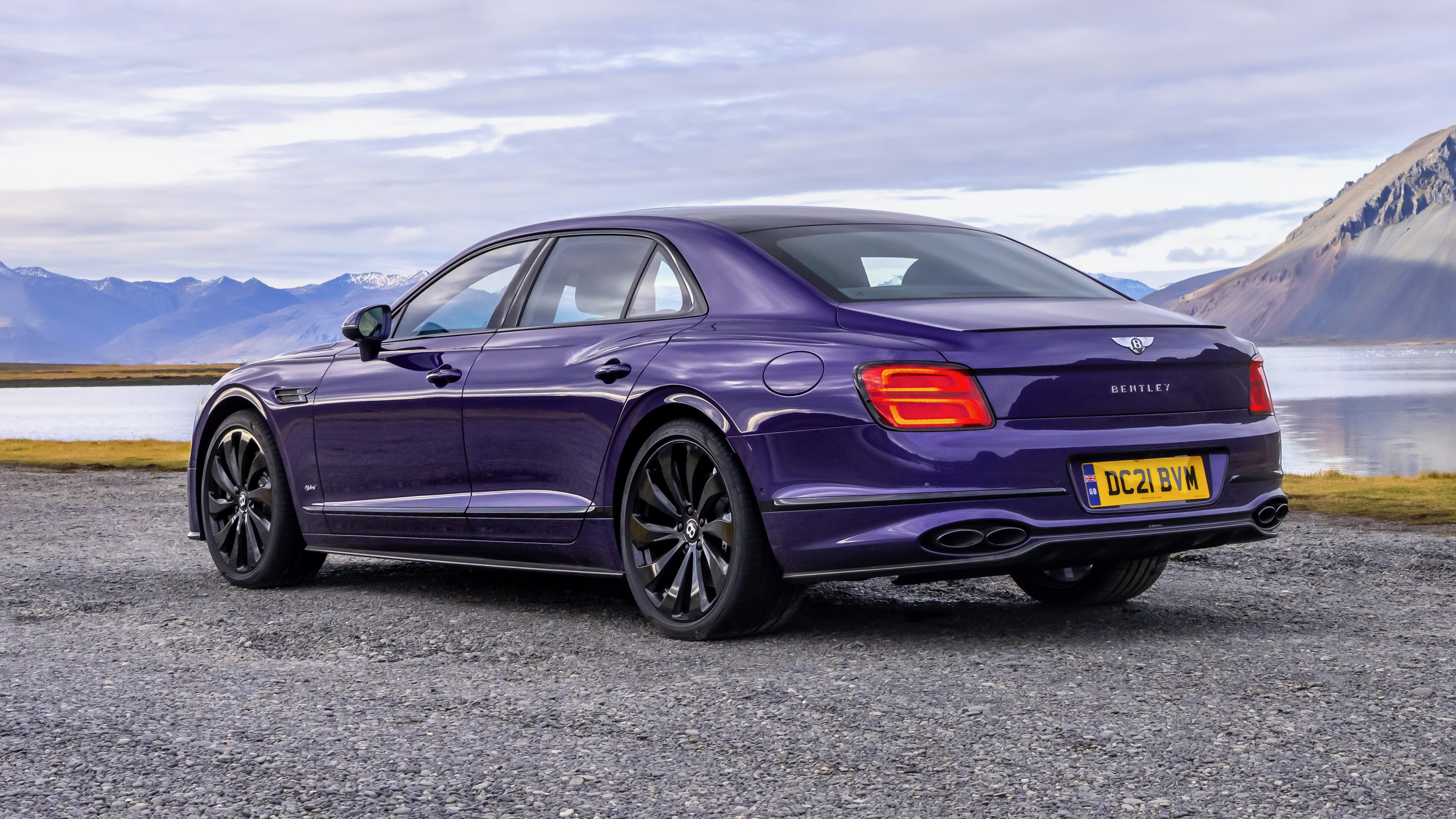
Bentley Flying Spur Hybrid review: 536bhp V6 tested
Another step along to road to a fully electric Bentley?
That’s about the size of it. Bentley has made great steps in some areas. Two years ago the Crewe production facility, rippling with solar panels, became the UK’s first carbon neutral car factory. The aim is end-to-end carbon neutrality by 2030. That’s highly commendable, but so far the products don’t really back this up.
Is this Flying Spur Hybrid the giant leap?
Not so much. More of a dipped toe. Two years ago Bentley released a Bentayga Hybrid and it wasn’t really that impressive. Two years on and the Flying Spur packages an all but identical set-up into the saloon. The hybrid system has gained 8bhp and the battery is a little larger, but on the whole the same flaws remain.
Broadly speaking, it’s the same system used by Porsche (in the Panamera and Cayenne) and Audi (A8 and Q7), sandwiching a single electric motor between a V6 and its automatic gearbox. The 134bhp e-motor is powerful enough to shunt the car along by itself, and at up to 84mph. But if you sit at 84mph in electric mode, a) it’s going to have taken you a while to get there and b) you’re not going to be travelling very much further on the 14.1kwh battery. Tickled along at low speeds with a featherlight touch you should be able to do 25-30 miles on electric.
Surely that’s far enough for all those urban Bentley owners?
It probably is. In China hybrids account for 45 per cent of Bentayga sales, and yeah for short hops, it’s very good. The Flying Spur always starts in electric and it’s a reminder of just how good a Bentley powered by electricity feels. The utter silence and precision smoothness, gravel crunching under tyres literally the only sound, the calmness of response, the effortless…
A good car to be chauffeured in, then?
Absolutely. But an even better one to drive. I know we’ve said this about the Flying Spur Hybrid but it is very possibly unique in being a luxury saloon where the driver won’t automatically be perceived as the hired help. It’s a very, very good piece of design.
And inside it’s as majestic as you expect. No different here to the V8 or W12 versions. The hybrid system doesn’t impinge on space. It’s a warmly wonderful place for four people to occupy while they get somewhere. The Damson leather of our car was a strong choice, but then again the view through the windscreen balanced it out since it consisted entirely of Iceland.
What? Why Iceland?
Because of a story we did out there with this late pre-production car, driving the whole way across the country using only renewable resources. Film and feature coming soon on that one.
I need more now!
Iceland, unsurprisingly for a country rich in natural sources of energy, is embracing electric cars hard. It’s built a charging infrastructure that runs exclusively on renewables, while the petrol we used in the Flying Spur wasn’t petrol at all, but a second generation bio-gasoline made by Coryton from straw. First gen fuels – made from vegetable oil, wheat grain, sugar cane – could also be used for human consumption, or use land that could be used for production. But second gen fuels, such as straw, are waste products – think wheat stalks or corn husks. The end product has a CO2 footprint 40 per cent less than petrol.
Does the Flying Spur run any differently on it?
It drives identically because the end product has the same EN228 rating as regular petrol. The smell is less acrid, though.
Does economy suffer?
No difference there either. Bentley hasn’t yet published the official WLTP economy and emissions figures, but when they do they’ll be ridiculous, claiming this can do 100mpg while emitting 50g/km or something. The tests aren’t fit for purpose – they allow you to compare cars, but don’t provide an accurate real world guide. I got 28mpg overall. Most owners should do better, providing they plug the car in.
Top Gear
Newsletter
Thank you for subscribing to our newsletter. Look out for your regular round-up of news, reviews and offers in your inbox.
Get all the latest news, reviews and exclusives, direct to your inbox.
A quick, quenching electric top-up, eh?
Hmm, not exactly. The Flying Spur does not have sophisticated on board charging. It’s AC rather than DC, and can only charge at a maximum of 7kW (what a home wallbox throws out) which means over two hours to gain those 25 miles. So for long trips, unless you’re happy to take long breaks, that’s your lot, and although it does regenerate some energy under braking, it’s not much and there’s no mode that allows spare engine power to be diverted back to the battery. There’s a Hold mode which will maintain a certain level (useful if your journey is ending in a city so you can do the last few miles as an EV), but that’s your lot.
The V6, meanwhile, will carry you 15 times further before needing to be replenished. And, perhaps somewhat oddly, that’s the piece of hardware that has had a significant upgrade from the Bentayga, now developing an extra 95bhp. That’s because the Bentayga’s single turbo 3.0 V6 is now a twin turbo ‘hot vee’ 2.9-litre. That alone develops 410bhp and 406lb ft.
It’s not slow then, this hybrid?
Very much not. Total system outputs are 536bhp and 553lb ft (the twin turbo V8 develops 542bhp and 568lb ft), which gives the Flying Spur 177mph potential and 0-62mph in 4.3secs.
But speed alone is neither the point of this car, nor hugely satisfying. That’s because the V6 is rather coarse. If you just creep around naturally you won’t notice, it thrums into life calmly and quietly if you switch into Sport mode, and is silent when cruising along. But if you indulge the acceleration, it gets a bit thrashy. And a Bentley shouldn’t be thrashy. It should be bassy and rumbly, like power is coming from a subterranean source.
Did you enjoy driving it?
It drives very well indeed. The ride is superb – Bentleys always seem able to use weight to their own advantage – it steers calmly and fluently and has a much more engaging and connected chassis than you expect. Body control is mighty.
The integration of the powertrain is brilliant – there’s no issue with hesitation, it’s responsive and petrol and electric work together well. But petrol is the dominant partner. Electric feels like a bolt-on. And yes, that’s the case with pretty much every hybrid out there right now, and it’s a limitation caused by the technology. Batteries are bulky and heavy, packaging them into an already heavy and complex internal combustion platform is difficult.
What does Bentley charge for a Flying Spur Hybrid?
£155,500.
What’s the future, then?
Don’t expect more advanced types of hybrid from Bentley or anyone else. These tick the boxes they need to, vault the WLTP regulations and allow owners to feel that bit better about themselves. The next step will not be range extenders or more advanced hybrids, but pure electric. Which hardly seems that much of a step given many firms are there already. But Bentley’s first isn’t due until 2025. In the meantime expect to see a hybrid Conti GT coupe (likely using this exact powertrain) along before too long.
Specs: 2.9-litre V6 twin turbo, 8spd auto, 4WD, 536bhp, 553lb ft, 0-62mph in 4.3sec, 177mph max, NAmpg, NAg/km CO2, 2,505kg
Featured







